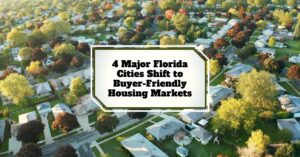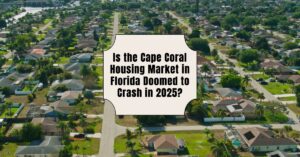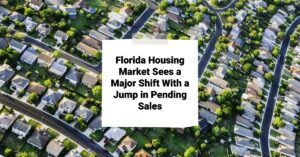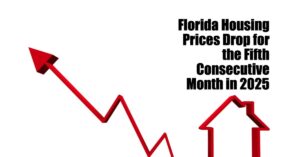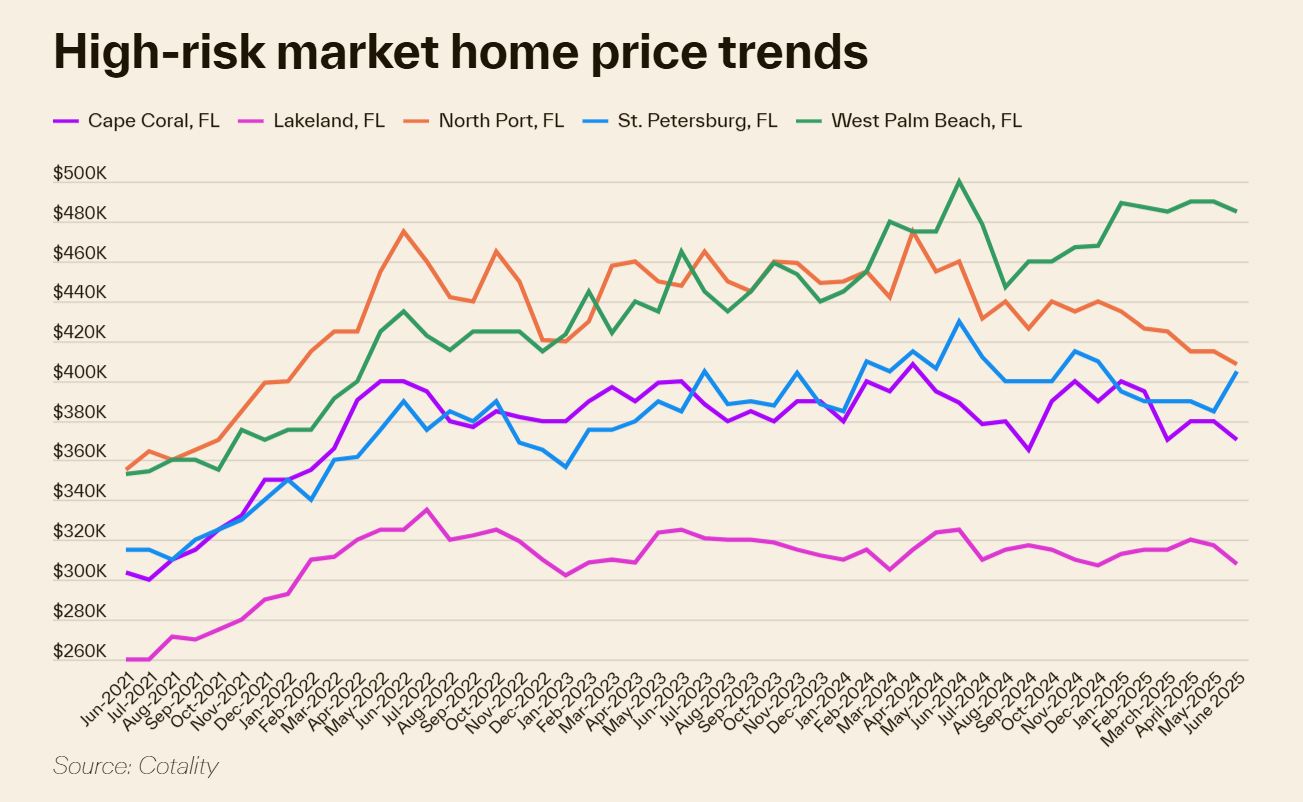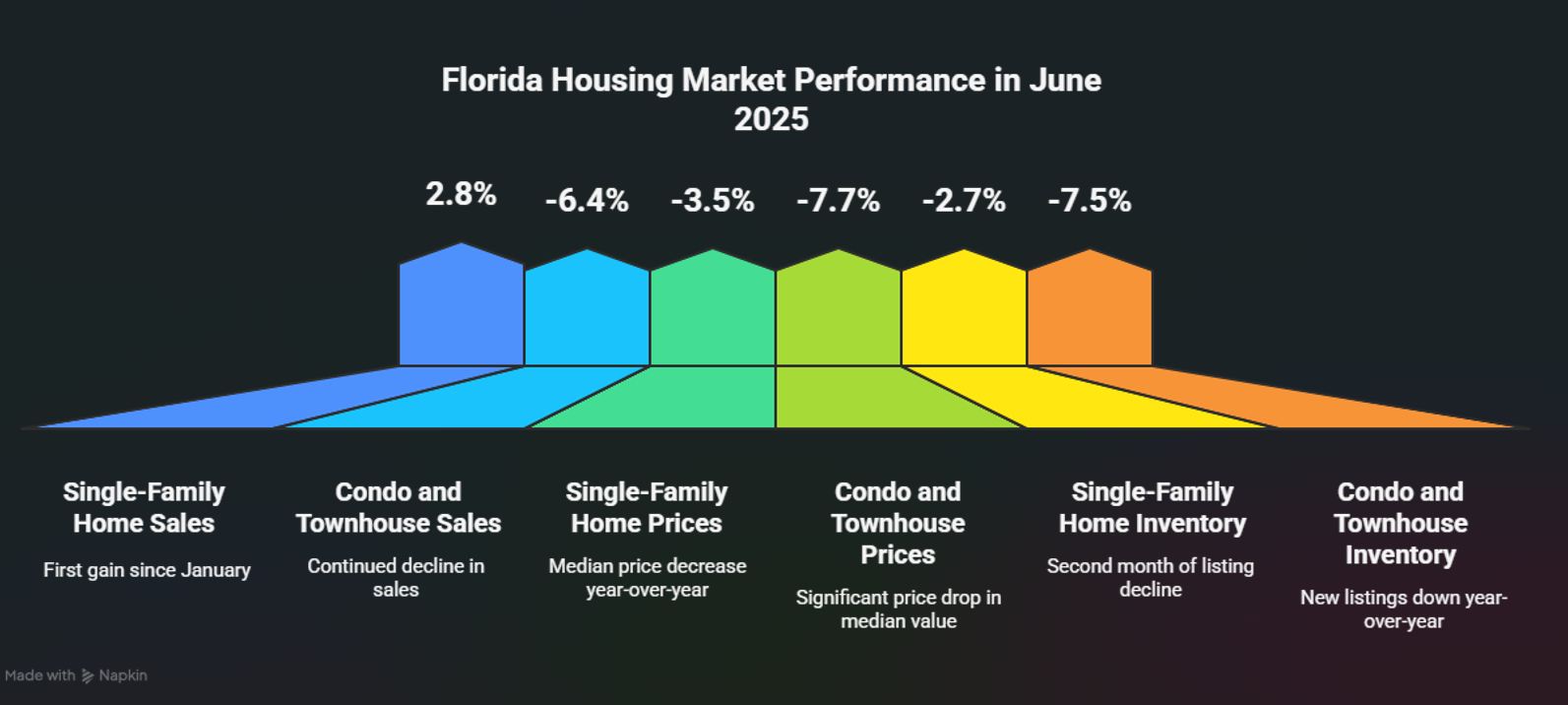The days of frantically outbidding everyone and waiving your inspection just to get a house in Florida are officially over. New data from Realtor.com® reveals that four of the state's biggest housing markets – Buyer – have finally tipped the scales in favor of people looking to buy. This is a huge shift from the feverish seller's market we’ve seen for the past few years, and it means a big change in who holds the power when it comes to finding your dream home.
Florida Housing Market Trends: 4 Cities Turn Buyer-Friendly in 2025
For what felt like forever, Florida was the poster child for the housing market on fire. Picture this: folks from all over the country, especially those looking to escape pricier cities like New York and Los Angeles, flocked to the Sunshine State. They were drawn by the promise of sunshine, more elbow room, and a dollar that seemed to stretch further. Homes were getting snatched up faster than you could blink, often for more than the asking price, and there were hardly any houses available. It was a tough time to be a buyer, to say the least.
But as is often the case with markets, things change. The steady stream of new residents moving to Florida has slowed down a bit, and importantly, there are significantly more homes on the market now. This means houses are staying put a little longer, and sellers are becoming more open to talking price or even pulling their listings if they aren’t getting the offers they hoped for. It’s a welcome relief for anyone who’s been dreaming of owning a piece of Florida.
Florida’s Inventory Surge: A Welcome Change
What’s really surprising is just how much Florida stands out in the national picture. While the country as a whole is seeing a more balanced housing market with about five months of supply (which is generally considered healthy), Florida's major metros are well past that point.
- Miami is leading the pack, boasting an impressive 9.7 months of housing supply.
- Orlando is right behind at 7.0 months of supply.
- Jacksonville and Tampa are both sitting comfortably at 6.3 months of supply.
Generally, anything above six months of supply signals that buyers have more options and more power. So, all four of these major Florida cities are officially in buyer-friendly territory.
Florida: The New King of Homes for Sale
The sheer volume of homes available in Florida is a big deal. According to Realtor.com® data, Florida is offering more active listings than any other state in the nation. We're talking about over 167,000 homes for sale, which is about 15% of all the homes available across the entire country. To put that in perspective, Texas is second with nearly 140,000 listings, and California is a distant third with 77,000.
This massive increase in available homes didn’t happen overnight. In just February 2023, Florida saw the steepest jump in inventory in the entire country – a whopping 143% increase compared to the year before! This rapid buildup helped the market find its balance much faster than most other places, setting the stage for the buyer-friendly conditions we're seeing now.
How the Buyer's Market is Playing Out on the Ground
Let's break down what this really looks like in each of these popular Florida cities:
- Miami: Known for its glitz and glamour, Miami is experiencing a significant shift. With 9.7 months of supply, it now leads the nation in homes being taken off the market. Inventory is up 24% from last year, and homes are sticking around 16 days longer. While sellers aren't dropping prices drastically across the board (only about 17% of listings have seen reductions), having so many homes available gives buyers a much better chance to negotiate.
- Orlando: This tourist hotspot saw a huge surge in popularity during the pandemic, but that trend is cooling. With 7 months of supply, homes are taking about two weeks longer to sell than last year, and inventory has grown by almost 20%. Importantly, nearly a quarter of Orlando listings have seen price cuts, showing sellers are becoming more flexible to make a sale.
- Jacksonville: As one of Florida’s fastest-growing metros, Jacksonville now has 6.3 months of supply. The median listing price has actually dropped by 2.6% to $399,000. What’s really telling is that almost 30% of the homes on the market have had price reductions, indicating sellers are adapting to the new market reality.
- Tampa: Also at 6.3 months of supply, Tampa has seen a 16% increase in listings compared to last year. Over a quarter of homes have seen price cuts, and a significant number of sellers are choosing to delist their properties rather than accept what they feel are low offers, suggesting they prefer to wait it out.
This Isn't a Crash, It's a (Welcome) Cooldown
It's crucial to understand that this isn't some sort of housing market collapse. Florida's economy is still strong, with unemployment rates across these four major cities (Miami at 3.1%, Orlando at 3.6%, Jacksonville at 3.8%, and Tampa at 3.8%) all sitting below the national average. Healthy job markets and a continued influx of people mean there's still demand for housing, even as the inventory levels normalize.
Think of it less like the housing crisis of the late 2000s and more like a market finding its equilibrium. Back then, buyers were often saddled with shaky loans and less stable finances. Today, the lending standards are much tighter, and people are generally in a stronger financial position. What we're seeing in Florida is simply an overheated market taking a deep breath and settling into something more sustainable.
Why This is Great News for Buyers
For anyone who's been dreaming of owning a home in Florida, the message is clear: the conditions are finally on your side. This increase in available homes means you have more choices than you’ve had in years. Homes sitting on the market longer translate to less competition, giving you more time to consider your options and less pressure to make a rushed decision. And with a significant portion of sellers in some of these metros willing to cut prices, you have a much better chance to negotiate a deal that works for you.
As a real estate enthusiast who’s watched these markets closely, I can tell you this shift is significant. After years of sellers dictating terms, Florida is moving into a more balanced phase. This is the moment many have been waiting for – a chance to step into the Florida housing market without feeling like you have to win a bidding war or give up essential protections just to get a home. For many, right now might just be the best opportunity in years to take advantage of Florida's abundant housing supply and enjoy a more favorable playing field.
Capitalize on Florida’s Emerging Buyer-Friendly Housing Markets
With Miami, Jacksonville, Tampa, and Orlando all transitioning into buyer-friendly housing markets in 2025, investors have a rare opportunity to enter high-demand regions at more favorable prices. These shifts create the perfect setup for long-term cash flow and appreciation.
Work with Norada Real Estate to explore turnkey rental properties across Florida’s top cities—so you can build wealth through steady rental income while these markets rebalance in your favor.
NEW FLORIDA LISTINGS AVAILABLE NOW!
Speak with a seasoned Norada investment counselor today (No Obligation):
(800) 611-3060
Want to Know More About the Florida Housing Market?
Explore these related articles for even more insights:
- Florida Housing Market Faces Fallout Amid NFIP Freeze and Permit Delays
- Florida Housing Market Sees a Major Shift With a Jump in Pending Sales
- Florida Housing Prices Drop for the Fifth Consecutive Month in 2025
- Is the Florida Housing Market on the Edge of a Crash or Downturn?
- 24 Florida Housing Markets Could See Home Prices Drop by Early 2026
- Is the Florida Housing Market Headed for Another Crash Like 2008?
- Key Trends Shaping the Florida Housing Market in 2025
- This Florida Housing Market Bucks National Trend With Declining Prices
- Florida Housing Market Crash 2.0? Analyst Warns of 2008 Echoes
- Tax Relief Proposed as Florida Housing Market Faces Deepening Crisis
- Florida Housing Market: Record Supply Expected to Favor Buyers in 2025
- Florida Housing Market Forecast for Next 2 Years: 2025-2026
- Florida Housing Market: Predictions for Next 5 Years (2025-2030)
- When Will the Housing Market Crash in Florida?
- South Florida Housing Market: Will it Crash?
